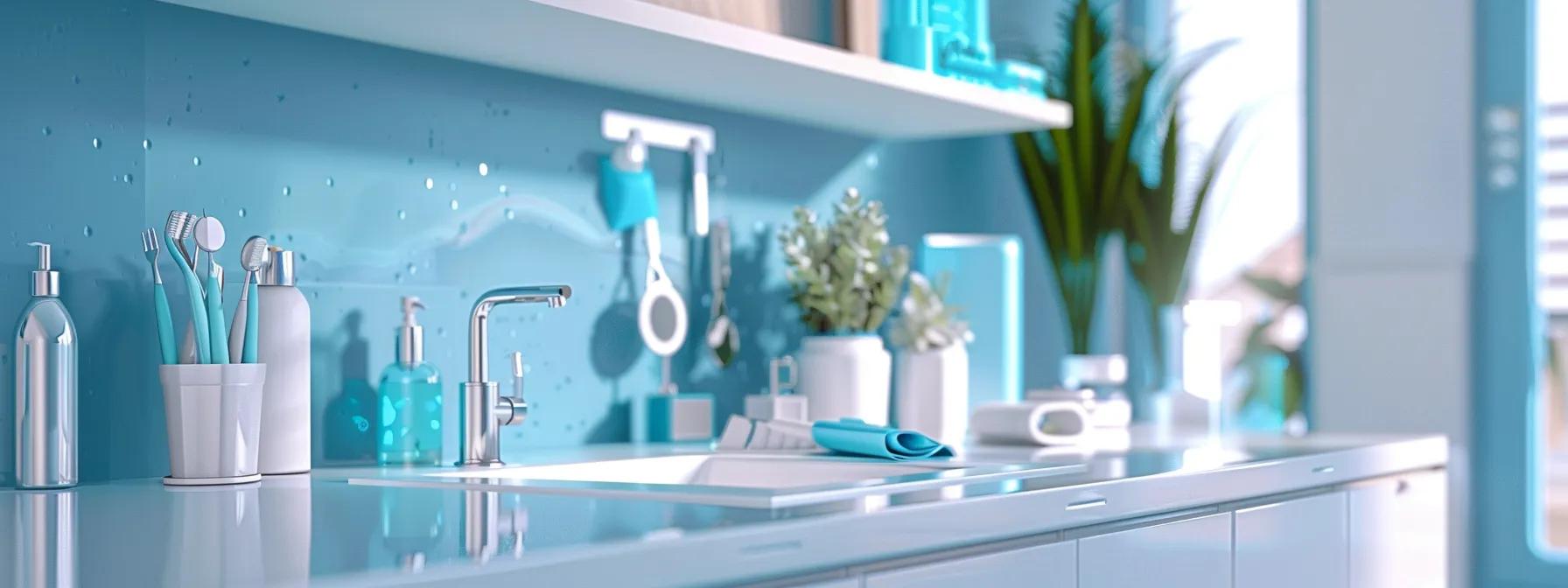Have you ever experienced the gut-punch of a sudden toothache or the instant dread of a chipped tooth? Dental emergencies are often painful, inconvenient, and expensive. But here’s the empowering truth—many of these mishaps are entirely preventable. The key lies not just in reacting when trouble arises, but in adopting a proactive approach to oral health that strengthens your defenses before a crisis begins.
In this article, we’ll walk you through a series of preventive strategies designed to keep your teeth and gums in peak condition. From the foods you choose to the tools you use, each decision can either bolster your oral health or expose it to risk. By building your dental routine on knowledge, consistency, and foresight, you’ll reduce the likelihood of emergencies—and enjoy peace of mind along the way.
The Unsung Heroes of Oral Wellness: Beyond Brushing and Flossing
Brushing and flossing are the pillars of oral hygiene—but they are just the beginning. A truly effective oral care routine requires thoughtful techniques, timely tool replacements, and an understanding of how to protect your teeth during vulnerable hours, especially at night.
Start with the basics: use a soft-bristled toothbrush to avoid damaging enamel and gums. Replace your brush every three months, or sooner if bristles fray. Floss daily to dislodge plaque in areas a toothbrush can’t reach. But don’t stop there. Incorporate tools like tongue scrapers to remove odor-causing bacteria from the back of your tongue—a simple habit that pays off in fresher breath and better oral health. And if you grind your teeth at night, consider investing in a custom-fitted night guard. These silent protectors can prevent cracks, chips, and gradual wear that might otherwise lead to a dental emergency down the road.
Even the angle and pressure you use when brushing matter. Harsh scrubbing can wear down enamel and irritate gums, so aim for gentle, circular strokes. Consider an electric toothbrush if manual brushing feels too aggressive or ineffective. These small adjustments, practiced daily, act as a shield against decay, sensitivity, and inflammation.
The Edibles’ Impact: An Unsweetened Truth
Diet plays a critical role in oral health, yet it’s often overlooked until damage has already occurred. Sugar, the well-known villain, isn’t dangerous just because of how much we consume—but how often. Frequent snacking on sugary or acidic foods keeps your mouth in a constant state of acid attack, eroding enamel and feeding decay-causing bacteria.
To combat this, reduce sugary treats and drinks, and opt for fiber-rich vegetables and crunchy fruits that stimulate saliva and naturally clean teeth surfaces. Calcium-rich foods—like cheese, yogurt, and even almonds—help remineralize enamel and neutralize harmful acids. These dietary allies work behind the scenes to reinforce your teeth and support overall gum health.
Drinking plenty of water, especially fluoridated water, is another underrated hero. It rinses away debris, hydrates tissues, and delivers fluoride directly to enamel. If you enjoy acidic beverages like soda or citrus juice, use a straw and rinse your mouth afterward. These small steps help balance the pH in your mouth and guard against long-term damage.
The Vanguards of Active Life: Innovations in Protection
Life is unpredictable. Whether you’re an athlete, a clumsy chewer, or a restless sleeper, you might be one bite or one fall away from a dental injury. That’s where mouthguards come in—sleek, custom-made protectors that fit comfortably over your teeth while offering powerful defense against impact and pressure.
Modern mouthguards have come a long way. They’re now thinner, more breathable, and even designed for speech clarity, making them comfortable enough to wear during games, workouts, or sleep. Whether you’re playing contact sports or grinding your teeth at night, a well-fitted guard can prevent fractures, chips, and even tooth loss.
Unlike store-bought boil-and-bite guards, professional mouthguards are tailored to your bite, offering superior protection and durability. If you’ve invested in orthodontic treatment, implants, or cosmetic restorations, a mouthguard is not just a suggestion—it’s insurance for your smile.

Alert and Perceptive: Recognizing the Precursors of Dental Plights
Most dental emergencies don’t appear out of nowhere—they evolve from subtle signs that are easy to overlook. A little tooth sensitivity here, a gum twinge there. Learning to recognize these signals and responding early is a vital skill for maintaining oral health.
Common early warning signs include: increased sensitivity to temperature, occasional pain when chewing, visible pits or dark spots on teeth, bleeding gums, and persistent bad breath. These symptoms often point to developing problems like cavities, infections, or gum disease—all of which are treatable in early stages but can escalate if ignored.
Fortunately, technology now allows dentists to detect issues long before they become visible or painful. Digital x-rays, intraoral cameras, and laser-based cavity detectors are among the tools that provide insight into hidden areas of concern. The sooner these problems are found, the easier—and less expensive—they are to treat. Staying aware of your body and scheduling regular exams is a powerful defense strategy.
The Quarterly Guard of Professional Check-Ups
Professional dental visits are your quarterly audit—a check-up not only of your teeth but of your overall oral defense system. While brushing and flossing are crucial, they can’t remove hardened plaque (calculus), detect small cavities hiding between teeth, or diagnose early signs of gum disease with the accuracy of a trained eye.
During your routine check-up, your dentist will examine every surface of your teeth, assess gum health, evaluate bite alignment, and review any restorations (like fillings or crowns) for signs of wear. Professional cleanings remove tartar and stains, while fluoride applications strengthen enamel. Sealants may also be recommended to protect the deep grooves of molars from bacterial invasion.
These appointments are about prevention, not punishment. Think of them as your scheduled reinforcements—times when your oral health gets reset and recalibrated. Missing one check-up may seem harmless, but consistent care is what keeps you ahead of problems, rather than chasing them after they’ve grown.
Solidifying the Garrison
Your mouth is the frontline of your health—what enters your body starts here. By embracing preventive practices, you’re not just maintaining a smile; you’re safeguarding your well-being. Each choice, from your toothbrush to your lunchbox to your next dental appointment, adds a layer to your defenses.
Solidify your oral health garrison with mindfulness, modern tools, and consistent care. Know your vulnerabilities, use protection when needed, and don’t wait for pain to signal a problem. Prevention isn’t about being perfect—it’s about being prepared. In a world where dental emergencies can strike at any time, a well-defended smile is your best asset.
Ready for a dentist who cares as much as you do about your smile? Contact Dr. Cappetta today to schedule a no-pressure consultation. You can also call us at (210) 614-5481.
With Fountain of Youth Dental, you can stop settling and finally get the healthy, stunning smile you deserve!
Schedule Your Free Consultation Today!
Fountain of Youth Dental
5282 Medical Dr. #520 San Antonio, TX 78229
(210) 614-5481
FAQs
What specific home care products can help prevent dental emergencies for patients with dry mouth due to medication?
Dry mouth can create a desert-like environment in your mouth where decay thrives. Patients on certain medications often experience reduced saliva production, leaving their teeth more vulnerable. To combat this, use prescription-strength fluoride toothpaste to reinforce enamel and prevent cavities. Saliva substitutes, mouthwashes formulated for dry mouth, and sugar-free xylitol lozenges can also help maintain moisture and protect against bacteria buildup.
By creating a more hydrated and fortified oral environment, these tools provide both relief and protection—two pillars of emergency prevention for those living with chronic dryness.
Can dietary interventions truly strengthen my teeth against potential dental emergencies?
Absolutely. The foods you consume can either fortify or weaken your teeth. Calcium and phosphate-rich items like yogurt, cheese, almonds, and leafy greens help remineralize enamel and prevent breakdown. These nutrients integrate into the tooth’s surface and make it more resistant to acid attacks.
Meanwhile, fibrous vegetables like celery and broccoli naturally scrub teeth while stimulating saliva production, a critical natural cleanser. Reducing frequent sugar intake and choosing whole, unprocessed snacks keeps harmful bacteria in check. Your diet can be your first line of defense—or your first vulnerability.
How often should I replace my toothbrush to maintain optimal oral health?
To keep your oral hygiene at peak performance, replace your toothbrush every three to four months—or sooner if bristles become frayed. Worn-out bristles lose their effectiveness, making it harder to remove plaque and bacteria. If you’ve recently been sick, it’s also wise to start fresh to avoid reintroducing germs into your system.
Think of your toothbrush as your daily defender. A worn tool can’t win battles, but a fresh one keeps your mouth in top condition and wards off potential problems before they start.
Related Articles
Emergency Dental Care Tips, Dental Emergency Symptoms, Common Dental Emergency Procedures, Responding to Dental Emergencies, Dental Emergency Insurance, Toothaches, Traumatic Dental Injuries, Sedation Dentistry, Emergency Dentistry, Emergency Dental Services, Emergency Dentist San Antonio, Tooth Ache Relief, Dental Emergency Prevention, Tooth Abscess Symptoms, Dental Trauma,





